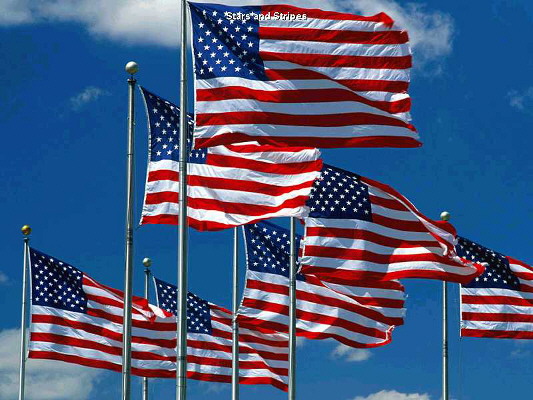| ~ Hall of Heroes ~ John William Finn Info from this website. |
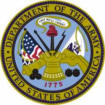  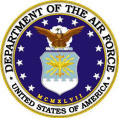 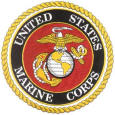  |
Lieutenant John William Finn is a retired officer of the United States Navy who received the Medal of Honor in recognition of heroism and distinguished service during the Japanese attack on Pearl Harbor on December 7, 1941.
Finn is the oldest living Medal of Honor recipient and is also the only living Pearl-Harbor-Day Medal of Honor recipient.
|
Kaneohe Bay is a sheltered cove on the west coastline of Oahu, a beautiful series of sandy beaches and tall palms that catch the first rays of sunlight reaching westward across the Pacific Ocean. Today it is home to the Kaneohe Bay Marine Corps Air Station. In 1941 it housed a small Naval Air Station in support of three  patrol squadrons, VP-11, VP-12 and VP-14. Each squadron had twelve patrol aircraft, most of them the newer PBY-5s. patrol squadrons, VP-11, VP-12 and VP-14. Each squadron had twelve patrol aircraft, most of them the newer PBY-5s.
For more than a month the men at Kaneohe Bay had been on a limited alert. The men of VP-14 had the duty assignment that December morning and had spent the night in their hangar, the newest of the three large hangars on the airfield. They had arisen with dawn on Sunday morning, launched three of their PBYs to conduct the routine daily submarine patrols, then rotated shifts to the chow line for breakfast. Three of VP-14's idle PBYs were anchored out in the bay; the remaining six were parked around the hangar in neat rows, along with the patrol aircraft of VP-11 and VP-12.
Half of the duty section of VP-14 was lounging around the hangar or Barracks #2 smoking cigarettes and making small talk while they waited for the remainder of their comrades to return from chow for the 8 A.M. muster. The sound of approaching aircraft engines drew little attention. Kaneohe Bay was an AIR station, and aircraft were always coming and going. The men watched as the first flight flew over their heads moving west towards Pearl Harbor. "Probably just some early-bird Army aviators," most of them thought. Then came the sound of more aircraft, this time flying closer. The slow rumble of high-flying airplanes became the scream of low flying Japanese zeros diving on the airfield. An explosion, then another, interrupted the morning stillness. The blue morning sky was lit with the bright orange balls of fire. It was a few minutes before eight o'clock on a bright Sunday morning, the day of December 7, 1941.
In his quarters a mile away from the airfield, VP-14's Chief Aviation Ordnanceman John Finn had the day off and was looking forward to spending the day with his wife, Alice. "We weren't asleep," he says of that morning, "we were just laying there talking about who was going to get up and start the coffee." While they lay there, in the distance they could hear the sounds of machine-gun fire. "I thought, 'I'm the chief ordnance officer, who the hell is firing machine guns today? Hey, it's Sunday!'," he recalled.
Chief Finn struggled to brush the unexpected sound aside. It was probably just someone testing a malfunctioning machine gun--nothing really to be concerned about. He put his arm around his wife and pulled her closer to him. Then came another unexpected sound-- the whines of a small airplane engine and not the roar of the twin-engine PBYs he was used to. The morning was a puzzling mix of unexpected noise and strange sounds, but there was still no hint of anything amiss.
Alice got up and walked into the bathroom, pulled the curtains aside and looked out at the dawn of the new day. "It's beautiful," she turned to say, just as a knock sounded on the door. Chief Finn grabbed his trousers and walked downstairs to answer the door. It was Lou Sullivan from next door. There was still no hint of how serious a crisis the early morning noises represented. "They want you at the hangar," she said simply, then turned and walked away. There hadn't even been time for John to ask any questions. He turned, went back upstairs to don his uniform shirt, hat and shoes, say "goodbye" to Alice, and walked out to the parking lot to his '38 Ford. As he slid behind the steering wheel another neighbor, Charlie Clark, opened the passenger-side door and got in. Neither 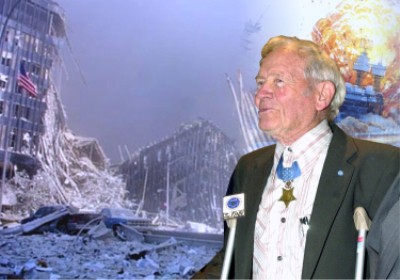 man spoke a word, more a matter of habit than anything else. Charlie always rode to the airfield with Chief Finn. The events THAT morning mirrored those of many other mornings, the only difference being, that day was a Sunday. man spoke a word, more a matter of habit than anything else. Charlie always rode to the airfield with Chief Finn. The events THAT morning mirrored those of many other mornings, the only difference being, that day was a Sunday.
Chief Finn turned the first corner out of the base quarters and noticed another sailor standing along the road. "I guess we should pick him up," Clark said. John pulled over and the young sailor hopped in the back seat. Then the three men continued the short drive to the airfield, which was still out of sight behind a series of curves and a small incline.
Halfway there a loud roar from above drowned out the sound of the '38 Ford's engine and Chief Finn looked out the window at a low flying airplane. It was just starting a "wing over". Then he saw the red circle on the underside of the zero's wing. For the first time he realized something was terribly wrong. "The damn Japs are attacking," he yelled as he threw the Ford into second gear, hit the gas, and sped into the air station. He wasn't prepared for the sight that met him there.
As they sped around the last turn leading down the hill and onto the airfield, the three men in the old Ford could see for the first time, the hell that was breaking loose below them. Japanese Zeroes were flying low over the field, machine-guns spitting fire, as they raked the PBYs neatly lined beside the hangars. Smoke was beginning to waft upwards from vehicles parked outside Hangar #3, their metal bodies showing evidence of the enemy strafing runs. Men ran about in confusion, fear, and frustration, ducking behind any semblance of shelter with each new strafing run.
Chief Finn pulled to a stop near the dock, unloaded his passengers in the open, and then made a mad dash for Hangar #3. As he did he heard the whine of incoming enemy planes. He saw the rain of bullets hitting the ground around him as he ran, and then heard the drumbeat of bullets against metal as hundreds of rounds raked Hangar #3. Smoke billowed upward, followed by the sounds of explosions.
The Japs weren't coming...they were HERE! And there seemed to be little anyone could do to stop them.
Rushing through the smoke, the fire, and the rain of bullets from the skies above, Chief Finn entered the armory to break out machine-guns and ammunition stored in an ordnance truck parked inside. Quickly he began passing them out to organize some kind...any kind...of resistance. (It was rumored that a couple of sailors even broke into a glass case on the Air Station to retrieve an old BAR...Browning Automatic Rifle...with which to fire back at the incoming enemy zeroes.)
The PBYs carried mounted guns, two 50 caliber and two 30 caliber machine-guns. Even as smoke drifted from the burning wreckage, sailors entered the open cockpits to remove guns and ammunition. Caught unawares and unprepared for an attack like the one unleashed upon Kaneohe Bay that morning, the men reacted swiftly and with great determination.
Hangar #3 was burning out of control and every PBY on the field was bullet-scarred and smoking in ruin. In the pall that dropped over the bay like a sudden, violent storm, Chief John Finn set up his own machine-gun on an instruction platform near where the heaviest activity seemed to be concentrated. In the open and masked only by the thick clouds of smoke, he began firing back at each new wave of enemy planes. Beside him planes were exploding, bullets were digging into the ground, and continued explosions reverberated. Chief Finn was wounded, and then wounded again, and again, and again. Still he remained behind his gun, firing back at the incoming airplanes. He was frustrated at what was happening around him--and ANGRY! "I was SO MAD," he says, "I guess I didn't have enough sense to be frightened or scared."
Japs kept coming and Chief Finn kept shooting. Blood flowed from numerous untended wounds but the intrepid Naval Chief wouldn't give up, wouldn't abandon his station, wouldn't quit trying to give back some of the destruction the Japanese were intent on raining down on his men. He paused briefly to smile as smoke began trailing from one of the zeroes, then he watched as it plummeted into the ground. He wasn't sure if he had shot it down but that didn't matter. It was DOWN! That's what mattered.
When the enemy planes finally began to withdraw there was no sense of relief, only the uncertain fear of their possible return at any moment and the irrefutable evidence of total destruction at Kaneohe Bay. Hangar #1 had burned and Hangar #3 destroyed by what appeared to have been a bomb. Every PBY had been destroyed beyond use. The departure of the enemy planes signaled only the beginning of a monumental effort to clear the debris, rebuild from the ashes, and organize a defense in case the zeroes DID return.
"I picked up quite a few hits--18 to 21," John Finn recalled. His injuries ranged from scratches to serious flesh wounds received during the brief time he had stood alone on the instruction platform, heedless of the incoming enemy--and the bombs--and bullets that struck around him. Now, as the sailors began trying to extinguish fires, move debris, and bring some semblance of order to Kaneohe Bay, they also began to urge Finn to get medical help for his bleeding body. The 32-year old Chief refused. Kaneohe Bay and his men needed him, needed his experience and his leadership.
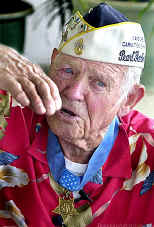 Moving slowly and with great pain, Chief John Finn began the task of repairing and setting up machine-gun pits around the air station. Most of these were 30 and 50 caliber weapons designed to be mounted and fired from the PBYs. It was an all day task just to devise ways to mount them for use on the ground. His wounds still untreated, Chief Finn worked into the evening. When night fell the three returning patrol planes were the only surviving aircraft at Kaneohe Bay. Moving slowly and with great pain, Chief John Finn began the task of repairing and setting up machine-gun pits around the air station. Most of these were 30 and 50 caliber weapons designed to be mounted and fired from the PBYs. It was an all day task just to devise ways to mount them for use on the ground. His wounds still untreated, Chief Finn worked into the evening. When night fell the three returning patrol planes were the only surviving aircraft at Kaneohe Bay.
Chief Finn was on the field to welcome and secure them for the evening.
The majority of his initial tasks finally completed and upon being ordered to get medical attention, Chief Finn reported to the aid station. It was 2 A.M. on Monday morning. He had been going non-stop for more than eighteen hours.
When he arrived for treatment the aid station was full of other seriously wounded men so Chief Finn decided to wait. Instead of seeing a doctor he returned home to check on his wife. When morning came he reported back for treatment. He was immediately hospitalized for nearly three weeks of major care. He wasn't well enough to return home until the 24th, Christmas Eve.
Twenty people died at Kaneohe Bay that bright Sunday morning that suddenly turned deadly. Two of the dead were civilians; the remainder was young American sailors who never dreamed their Naval service would so quickly turn deadly. They were buried on the air station where they had thought they would find their tour of duty in Paradise.
|
|
Citation
For extraordinary heroism, distinguished service, and devotion above and beyond the call of duty. During the first attack by Japanese airplanes on the Naval Air Station, Kanoehe Bay, on 7 December 1941, Lieutenant Finn promptly secured and manned a 50-caliber machine gun mounted on an instruction stand in a completely exposed section of the parking ramp, which was under heavy enemy machine-gun strafing fire. Although painfully wounded many times, he continued to man this gun and to return the enemy's fire vigorously and with telling effect throughout the enemy strafing and bombing attacks and with complete disregard for his own personal safety. It was only by specific orders that he was persuaded to leave his post to seek medical attention. Following first-aid treatment, although obviously suffering much pain and moving with great difficulty, he returned to the squadron area and actively supervised the rearming of returning planes. His extraordinary heroism and conduct in this action were in keeping with the highest traditions of the United States Naval Service.
|
On March 26, Sandrat made this post in the Canteen, which sent me looking for his story....
 OLDEST RECIPIENT - Retired U.S. Navy Lt. John W. Finn, a 99-year old veteran of World War II and the oldest living Medal of Honor recipient, attends a Medal of Honor ceremony at Arlington National Cemetery, March 25, 2009. U.S. Army photo by Adam Skoczylas
When I went looking for more information about this hero, I found something that was disturbing on so many levels that I wanted to share it with you all. On June 24, 2002, Mr. Finn was traveling and had his Medal of Honor in his pocket. Of course the airline security alarms went off. The very sad thing about the story to me is that when he placed his precious Medal of Honor in the scanning box, the airport attendants didn't know what it was. There is much more to this story that you can read here, but the short version is that Mr. Finn was treated atrociously by the airline. Just a reminder - that old man you see hobbling along who might have difficulty standing may be a hero of this country. They don't ask for help or recognition so you wouldn't know. It never hurts to be nice. :-(
Be not forgetful to entertain strangers: for thereby some have entertained angels unawares. -Hebrews 13:2
|
| Please remember the Canteen is here to honor, support and entertain our troops and their families. This is a politics-free zone! Thanks for helping us in our mission! |
|






 patrol squadrons, VP-11, VP-12 and VP-14. Each squadron had twelve patrol aircraft, most of them the newer PBY-5s.
patrol squadrons, VP-11, VP-12 and VP-14. Each squadron had twelve patrol aircraft, most of them the newer PBY-5s. man spoke a word, more a matter of habit than anything else. Charlie always rode to the airfield with Chief Finn. The events THAT morning mirrored those of many other mornings, the only difference being, that day was a Sunday.
man spoke a word, more a matter of habit than anything else. Charlie always rode to the airfield with Chief Finn. The events THAT morning mirrored those of many other mornings, the only difference being, that day was a Sunday. Moving slowly and with great pain, Chief John Finn began the task of repairing and setting up machine-gun pits around the air station. Most of these were 30 and 50 caliber weapons designed to be mounted and fired from the PBYs. It was an all day task just to devise ways to mount them for use on the ground. His wounds still untreated, Chief Finn worked into the evening. When night fell the three returning patrol planes were the only surviving aircraft at Kaneohe Bay.
Moving slowly and with great pain, Chief John Finn began the task of repairing and setting up machine-gun pits around the air station. Most of these were 30 and 50 caliber weapons designed to be mounted and fired from the PBYs. It was an all day task just to devise ways to mount them for use on the ground. His wounds still untreated, Chief Finn worked into the evening. When night fell the three returning patrol planes were the only surviving aircraft at Kaneohe Bay. 